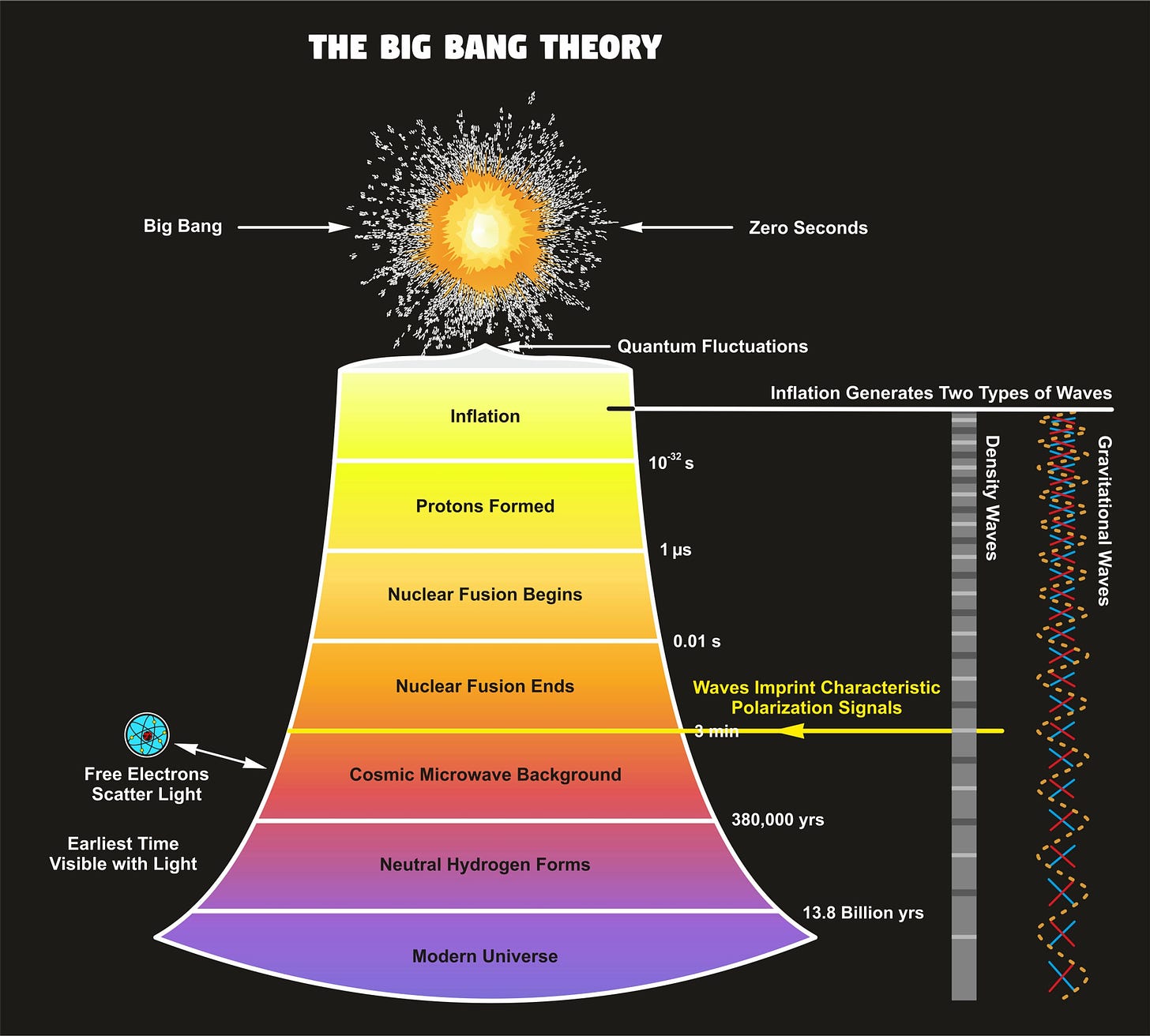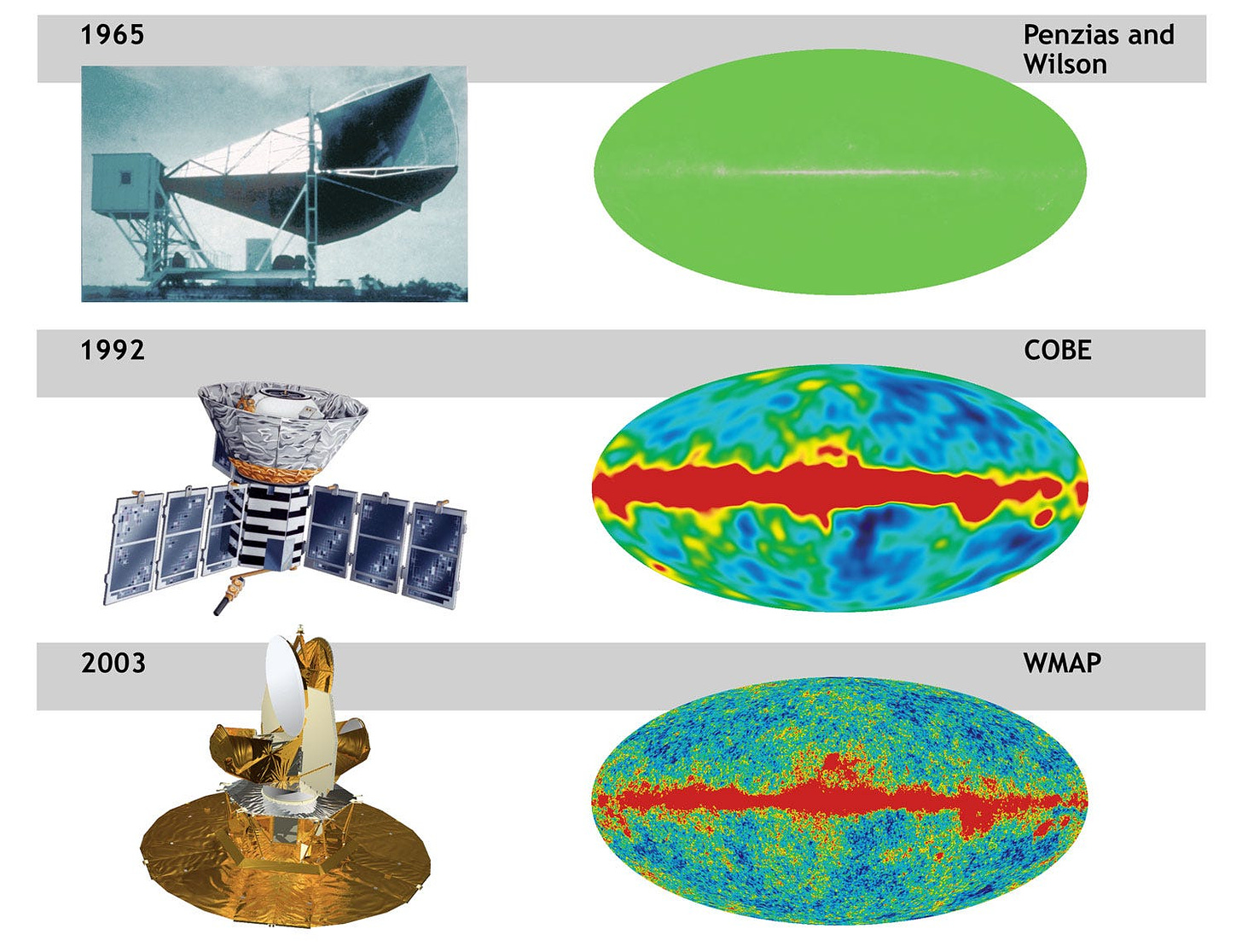Wednesday, April 24, 2024
Cosmic Microwave Background radiation disproves the Big Bang religion.
One of many such proofs. CMB and that ‘horrible truth’ that the Earth might well be the barycentre of the universe.
by StFerdIII
Prologue
Cosmic Background Radiation is used as a proof of the ‘Big Bang’ a discredited theory, where supposedly a singular ‘egg’ containing all the elements within the universe ‘exploded’, creating everything, including life on this planet, and this explosion left a radiation imprint in the cosmos. As previous posts have outlined, this theory and its CMB derivative is entirely fabricated and wrong. However, it is even worse for the Banging-faithful. CMB as properly understood, actually undermines and negates the Big Bang model. Hanging yourself on your own petard and all that.
What is it?
The Cosmic Microwave Background Radiation (CMB) is radiation in the form of microwaves (the same which are produced in a microwave oven) which is supposedly the residual energy left over from the Big Bang that was said to have occurred 13.7 billion years ago. The original temperature of the Big Bang explosion was believed to have been about 3000 degrees Kelvin and this is said to have cooled down to the present 2.75° Kelvin of the CMB 13.7 billion years later as the universe expanded. No evidence exists for these suppositions, just models and thought experiments.
[A problem with this dogma is that our universe supposedly has a diameter of 93 billion light years, or roughly 550 billion-trillion miles. 13.7 billion years is not enough time for this distance to be created at the speed of light.]
In 1965, Arno Penzias and Robert Wilson ‘discovered’ the Cosmic Microwave Background Radiation or ‘CMB’. It was hailed as one of the greatest discoveries ‘ever’ (or ‘evah’ in climate-speak), ‘confirming’ the Catholic Fr. Georges Lemaître’s theory, from the 1930s (Penzias and Wilson, 1965).
There was, however, a generational-long history of CMB ‘discovery’, including Reber (d. 2002) whose discoveries in the early 1940s of the CMB were widely published in many peer-reviewed journals and the Canadian astronomer Andrew McKellar (1941) who discovered interstellar gas radiating at 3º Kelvin. The Americans Penzias and Wilson (1965) received credit for this ‘insight’ because they interpreted the CMB in line with the Big Bang theology - a burgeoning field with enormous financial support. But the ideas of CMB date to at least 1895. Forecasts of the temperature of CMB have been all over the place:
· In 1895, C. E. Guillaume, determined that the cosmic temperature (or CMB) should be 5° or 6° K (Guillaume, 1896).
· In 1926 Sir Arthur Eddington posited that the space between the heated bodies of the universe would cool down to a temperature slightly above absolute zero, and his chosen figure was between 2.8° and 3.18° K (Eddington, 1926).
· Seven years later (1933), Erhard Regener obtained the figure of 2.8° Kelvin, and stipulated that it was a homogeneous energy field.
· Nernst posited 0.75° Kelvin in 1938; Herzberg 2.3° K in 1941; Finlay-Freundlich, using the theory of “tired light” said it should be between 1.9° to 6° K.
One of the main tenets of the Big Bang theory is that the currently agreed 2.728ºK temperature is the result of radiation released in the reaction of electrons and protons that were in the process of forming hydrogen about one million years after the initial explosion. Since the temperature during this reactive state is said to have been 3,000 ºK, the resulting 2.728ºK is said to be the result of a hydrogen flash redshift factor of z = 1,000, although few have an explanation why there were no objects in the cosmos with z factors between 10 and 1000.
Sir Fred Hoyle dubbed this theory “The Big Bang” to register his scepticism regarding its scientific validity, although Hoyle tenaciously held to an equally weak view called “The Steady State” theory, which holds that the universe is infinite yet comes into being little by little (Physics Today, Nov 1982). Although Big Bang advocates claim that their theory predicted the existence of the CMB, their prediction was quite higher than the present 2.728° Kelvin as given in the list above (Gamow, 1961).
It exists but so what?
Few dispute the rather obvious fact that the CMB exists, but what is disputed is precisely why it exists and what it means. All in all, there is little to persuade the critical observer that a Big Bang produces the CMB, as opposed to merely the natural minimum of heat expected in a universe at equilibrium. As Andre Assis puts it:
Usually it is claimed that the CBR (cosmic background radiation) is a proof of the big bang and of the expansion of the universe as it had been predicted by Gamow and collaborators….However, we performed a bibliographic search and found something quite different from this view….we have found several predictions or estimations of this temperature based on a stationary universe without expansion, always varying between 2 K and 6 K. Moreover, one of these estimates [C. E. Guillaume] was performed in 1896, prior to Gamow’s birth in 1904! The conclusion is that the discovery of the CBR by Penzias and Wilson in 1965 is a decisive factor in favour of a universe in dynamical equilibrium without expansion, and against the big bang (Assis, pp. 189-190).
Not only can the CMB be shown to be unsupportive of the Big Bang theory, but it is obvious that the low Kelvin temperature is consistent with non-expanding models of the universe, e.g., geocentric models of the universe. This is anathema to ‘The Science’.
Isotropy versus Anisotropy
The reality that a low “residual energy” CMB invalidates the Big Bang and actually points to the Earth as the barycentre of the cosmos is sometimes admitted by ‘The Science’. Joseph Silk of the University of California (Berkeley) lamented:
Studies of the cosmic background radiation have confirmed the isotropy of the radiation, or its complete uniformity in all directions. If the universe possesses a center, we must be very close to it…” (Silk, pp. 399-400).
If observed anywhere else in the universe the CMB will appear heavily anisotropic (or heterogenous, dissimilar). If viewed from the Earth the CMB appears to be isotropic or homogenous. This cannot be tolerated by ‘The Science’, therefore there have been some furious attempts to dismiss this fact by presuming, in addition to its isotropy, that the universe is also homogeneous, since all Big Bang and Steady-State cosmologies require both isotropy and homogeneity (Ellis, p. 92). Yet this is not what their own evidence shows.
The Earth-viewed observation of CMB isotropy serves as the absolute frame of reference, anathema to Special Relativity and the cult of Einstein. But there it is. As V. J. Weisskopf states:
It is remarkable that we now are justified in talking about an absolute motion, and that we can measure it. The great dream of Michelson and Morley is realized….It makes sense to say that an observer is at rest in an absolute sense when the 3K radiation appears to have the same frequencies in all directions. Nature has provided an absolute frame of reference. The deeper significance of this concept is not yet clear (Weisskopf, 1983).
Einstein’s make-believe world of ‘Relativity’ relied on no absolutes, no frame of reference, no ether and no inconstancy in the speed of light, including the ‘acceleration’ of the universe pace the Big Bang dogma. He was wrong on every assumption. More here

